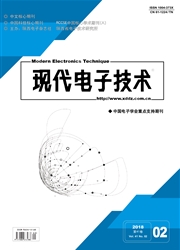

 中文摘要:
中文摘要:
介绍了PCNN模型原理,提出了基于双通道自适应的PCNN多光谱与全色图像融合算法。该算法首先将RGB空间的多光谱图像转换为HSV彩色空间,然后将HSV彩色空间中的非彩色通道(V通道)的灰度像素值和全色图像的像素灰度值分别作为PCNN-1及PCNN-2的神经元输入,利用方向性信息作为自适应链接强度系数,对非彩色通道图像和全色图像进行自适应分解,再将点火时间序列送入判决因子得到新的非彩色通道图像,最后将原多光谱图像的H通道分量、S通道分量及新的V通道分量经HSV空间逆变换获得最终的融合图像。实验结果表明,该算法不仅解决了链接强度系数自动设置的问题,而且充分考虑到图像边缘和方向特征的影响,无论在主观视觉效果,还是客观评价标准上均优于IHS、PCA、小波融合等其他图像融合算法,同时降低了计算复杂度。
 英文摘要:
英文摘要:
The principle of PCNN model is introduced,and an image fusion algorithm of multispectral and panchromatic based on adaptive dual-channel PCNN is proposed. Firstly the multispectral image of RGB space is converted to HSV color space,and then the gray level of achromatic channel(channel V)in HSV color space and gray level of panchromatic images are entered as PCNN-1 and PCNN-2 neurons respectively,using orientation information as an adaptive link strength factor to achieve adaptive decomposition for achromatic channel and panchromatic images. The duration of ignition sequence is sent to judgment factor to get new of achromatic channel image. Finally the final fused image is obtained through HSV space inverse transformation of H channel component,S Channel component and new V-channel component of original multispectral image. Ex-perimental results show that the algorithm not only solved the problem of automatically setting linking strength factor,but also took full account of the effect of image edge and directional characteristics. No matter the subjective visual effect,or objective evaluation standards they are all better than other image fusion algorithms such as IHS,PCA,wavelet transform image fusion, the computational complexity is reduced in the meantime.
 同期刊论文项目
同期刊论文项目
 同项目期刊论文
同项目期刊论文
 期刊信息
期刊信息
